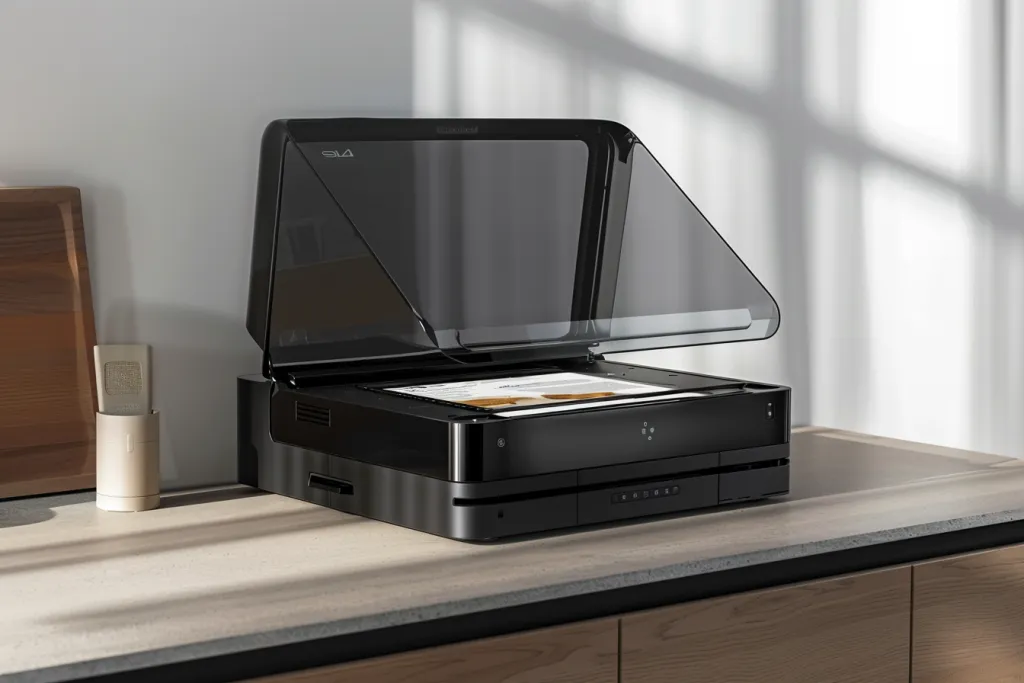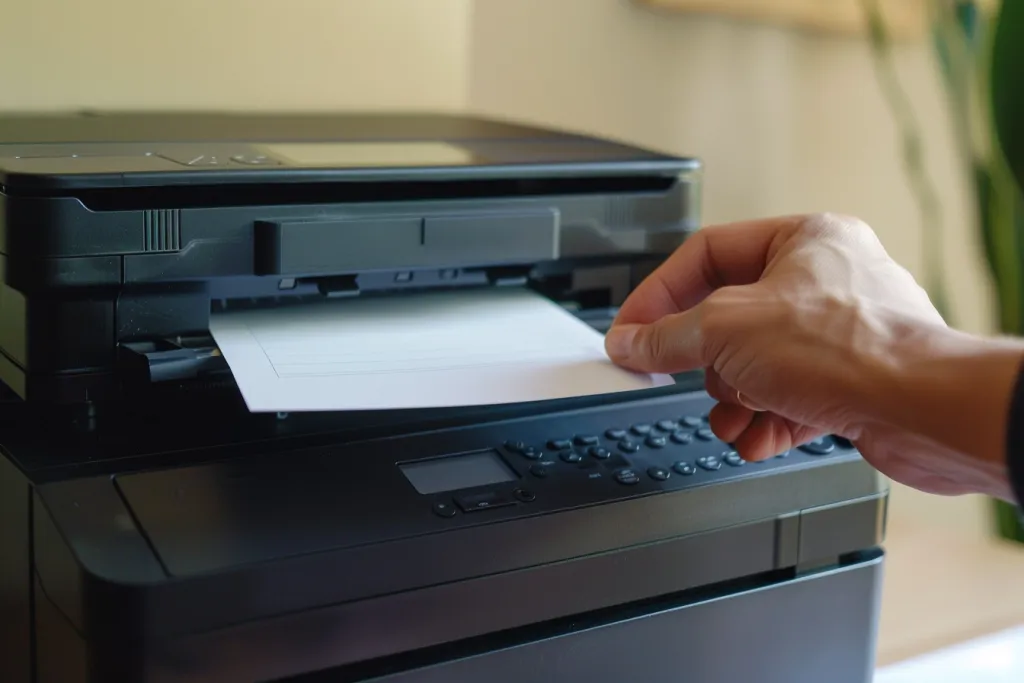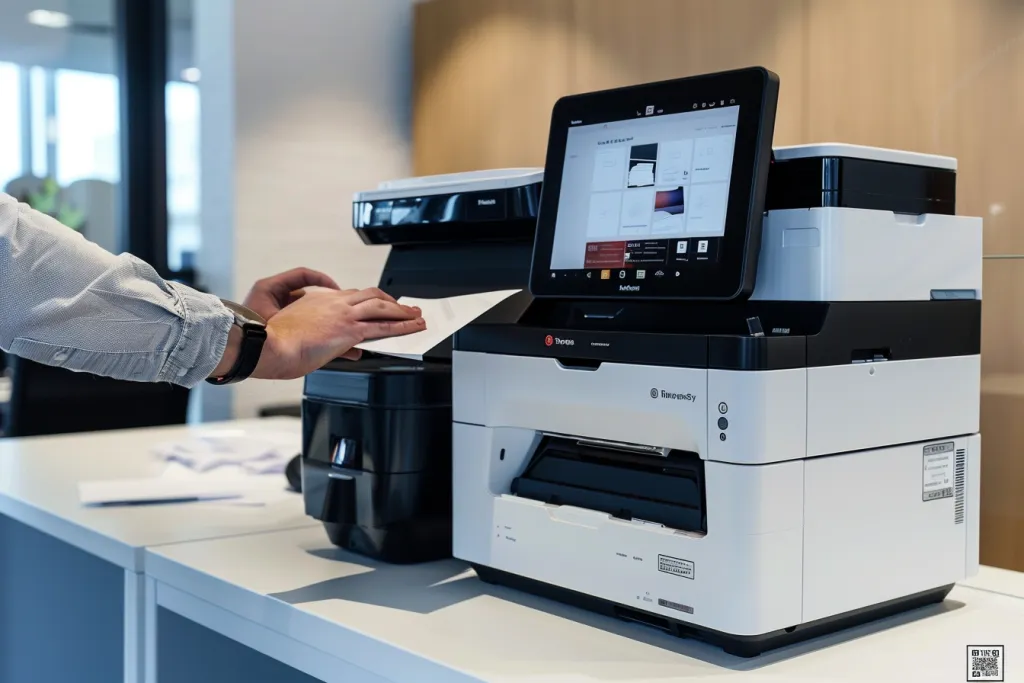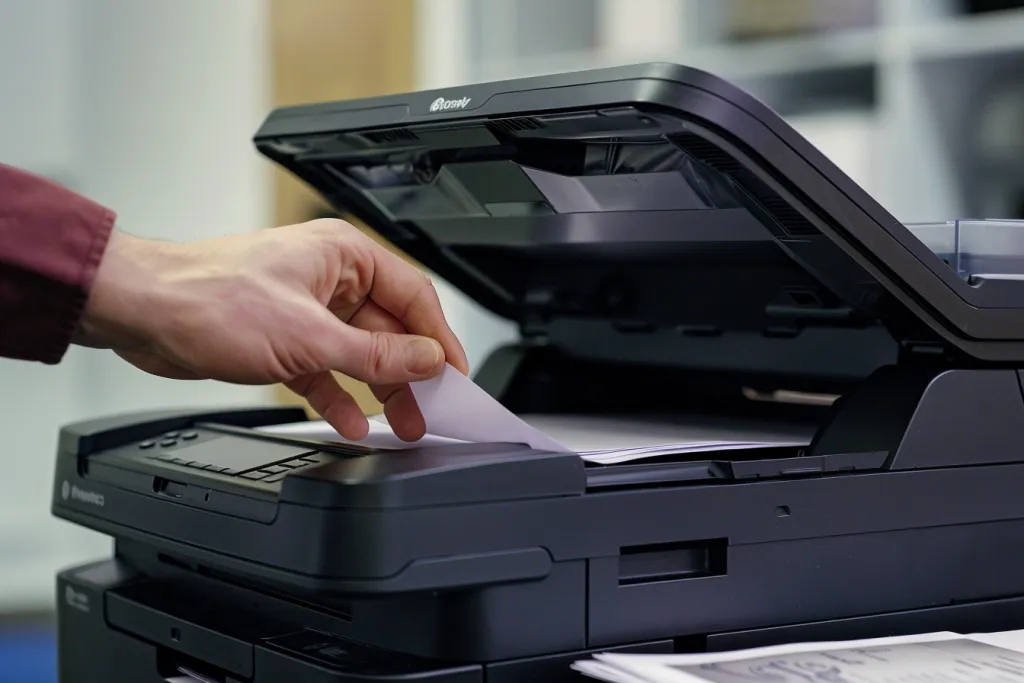Nowadays, printer scanner is one of the requirement in every home and office. It is very helpful device to use in home and office.
The printer scanner has the capacity to perform both printing and scanning in one device. It is known as printer scanner because it has a multi-functional capacity.
This article describes how the printer scanner works, its advantage and disadvantages and also it explains to us about how we can choose the best one for our needs and how to use it with care.
Table of Contents:
– What is a printer scanner?
– How does a printer scanner work?
– Benefits and drawbacks of a printer scanner
– How to choose a printer scanner
– How to use a printer scanner
What is a printer scanner?

A printer scanner is a device that combines two essential office equipment- a printer and a scanner, thus making it an all-in-one printer that lets document creation and sharing between different users become eaiser and more convinient. With the advent of printer scanner, the problems associated with handling paper document has been solved by providing the ability to print documents from digital files and by digitising paper documents to editable document or to be sent to other users.
Nowadays, printer scanners have several types to choose from. They can be classified into inkjet and laser types.
Inkjet printer scanners are known for their good color graphics printouts, which makes them very suitable for printing photos with many colour components. Laser printer scanners are more for speed and economy, thus very useful for printing a large quatity of text documents in an office environment. The type of printer scanners depends on one’s requirements, like a good printout quality, a much faster print speed or the need for a large print volume.
This combination of functions was not only a space saving device by combining printer and scanner, reducing cost and complexity of handling separated devices. Transformation from printing paper to a digital device also implies that printer scanners produce economical, feasible and convenient solutions for offices in the document management, and they are also the important electrical appliance in the modern household.
How does a printer scanner work?

A printer scanner is basically a combination of a printer and a scanner. The process when printing is that the printer takes digital data from a computer or mobile device in digital format and turns it into something tangible that you can hold in your hand. This is how a printer works: it is either an inkjet or laser printer. An inkjet printer works by spraying tiny ink droplets on paper to form a picture or text. A laser printer works by spraying toner onto a piece of paper that is stuck in the printer with the help of a laser beam. When the toner is all over the paper, heat is applied to bond it to the physical surface.
The scanning part works by shining a bright light on the document to be scanned, which is reflected back to the sensor by the document, then the sensor (e.g. a charge-coupled device or sometimes contact image sensor, which is a semiconductor section) converts the light into digital signals, which is further processed to digital images or text by the printer scanner. A printer scanner usually comes with advanced software that can process and convert digital files into PDF or JPEG and other shareable and editable file formats.
These two different functions are made to work together seamlessly via advanced firmware and software that controls the operation of the device. Functions can be chosen, settings can be adjusted, and the start of tasks can be initiated either from buttons on the device, or from software installed on a connecting computer or mobile device. All of this results in the various capabilities of bridge printer scanners – both for printing and scanning – being made to come together seamlessly and intuitively.
Benefits and drawbacks of a printer scanner

The pricher scanner has a lot of advantages for users. The main advantage is convienience, and that is the most important pricher scanner advantage. Usually, users need to have two several equipments for full document cycle: printer and separately scanner. Meanwhile, using pricher scanner, users save time to print and scan documents and also save space for the equipment and documents. Especially, these equipments are very usefull for shiled office and home. There is little free spase. Moreover, users save àmoney also. Usually, they need to buy pice of pricher and separately piece of scanner, but pricher scanner is only one equipment.
And in addition, printer scanners are also very versatile. and you can have fun with it. You can print high-quality photos with printers. You can make scans of documents to send by email. And the best thing is that many have wireless technology, so that you can print or scan things with smartphones and tablet, that is even handy.
However, printer scanners also have their downsides. A prominent handicap is that if one function breaks down, it can render the whole device useless, leading to the inability to print or scan – or both. The upfront cost of a printer scanner is also typically higher than that of either a standalone printer or scanner, often making it a larger investment. Moreover, individuals who need to print or scan professional-quality outputs may find that their work is better suited to a standalone printer or scanner that offers better specifications (such as photo printing or copying) and speed.
How to choose a printer scanner

When looking for the right printer scanner, there are various aspects worthy of consideration to determine whether it is a perfect fit for you or not.
The first consideration that a buyer needs to keep in mind is for which purpose will they be using it the most?
If one is printing pictures or colourful documents quite often, then an inkjet is a better choice, otherwise, a laser for printing text documents is faster and more efficient.
Another factor to consider is the connectivity of the device. Many printer scanners offer Wi-Fi connectivity for easy printing and scanning from other devices even from a distance without the use of cables. Scanning resolution in dots per inch (DPI) is another key factor to consider; the higher the DPI value, the higher the quality of the scanned images.
Then work out the cost of owning the thing. How much will replacement ink or toner cartridges cost? How energy efficient is it? Some printer scanners include extras: an automatic document feeder (ADF) for automatic one-touch scanning multiple pages, or duplex-printing for two-sided printing, both of which can increase productivity and ease of use.
How to use a printer scanner

In this article we will see how to use a printer scanner. Proper use requires proper setup and installation. Unpack the device and install the ink or toner cartridges. Many printer scanners are wireless, so you need to connect the printer scanner to your computer or the network if it is connected to the internet. The installation software will guide you through the installation, and install the necessary drivers and software on your computer.
After you set it up, using the printer function is about as simple as it gets: you select printer scanner as your chosen printer for any documents you wish to print from your computer or mobile device. For scanning, documents can be placed on the scanner bed or, if an ADF is present, fed through the unit. The device interface or accompanying computer software allows you to choose the scan function and then set your parameters and make your scan. You can then save, edit or share the document as suits your needs.
Proper maintenance – cleaning the scanner glass, replacing the ink or toner cartridges as they run out – will ensure your printer scanner keeps working smoothly, as will making sure you download and install any software and firmware updates that become available.
Conclusion: The printer scanner is a symbol of the change in how documents are handled as it has become a more convenient, efficient and versatile way of scanning and printing documents for personal or professional use. Therefore, by learning and understanding how these devices work, their pros, cons and knowing how to purchase, use and maintain them is essential to become productive. It is possible to have an easy and reduced effort if you have the proper printer scanner.



